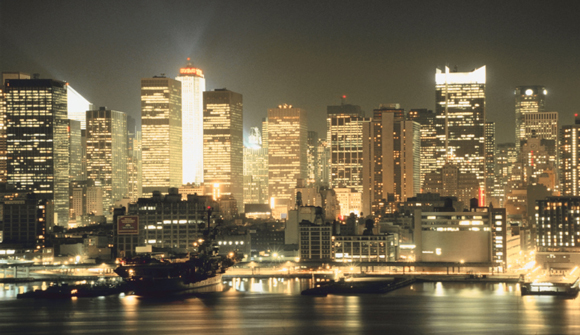
Fixing America’s Roads Is a Great Opportunity … Many politicians and commentators are calling for a big burst of spending on infrastructure. On his blog, my esteemed Bloomberg View colleague Tyler Cowen raises an interesting question: What is the opportunity cost of government spending — that is, what is the value of the other uses to which the money and resources could be put? – Bloomberg editorial
We think asking about the “opportunity cost” is the wrong question when it comes to government rebuilding programs.
We think people should question whether government should be involved at all.
Most things government does end badly. The thing government is best at is destruction, via wars, etc.
If possible, infrastructure should be created and maintained privately.
Naturally, this is not an idea the Bloomberg editorial suggests. No. Instead it contemplates what kind of spending is going to provide the most “value.”
More:
When we calculate the social return on infrastructure, we have to think about the cost of doing nothing. If the U.S. never repairs its roads and bridges and ports, its world-class transportation network will decay until it is no longer usable.
The editorial goes on to note that the real reason government spending on infrastructure is valuable is because, “Government spending may use resources that the private sector has left unused.”
Since construction employment is still low, historically speaking, a government infrastructure push might help with US employment issues. The conclusion is in favor of “a big program of government spending to put our roads and bridges back in top condition.”
From a libertarian perspective, we have problems with this analysis. For one thing, government doesn’t pursue construction to support the “public good” – whatever that is. For the most part, government officials tend to build or repair infrastructure that is most lucrative to those involved.
Second, since the overriding goal is to maximize profit, more construction takes place than can be supported by various communities or even fedgov itself.
This is one reason US infrastructure is in terrible shape. It’s a lot more lucrative to build something than to maintain it.
Finally, the infrastructure that will be built or rebuilt will surely reflect the prejudices of those in charge. Often those opinions differ sharply from the local community.
One of the most brilliant books regarding this last point is called The Power Broker, HERE. Published in the mid 1970s, it portrays the life of the great urban planner Robert Moses. It was selected by Modern Library as one of the greatest nonfiction books of the twentieth century.
For some reason, after creating a masterpiece, author Robert Caro has spent the last 30 years or so writing about Lyndon Johnson. God knows why. Presumably he is well paid.
Anyway, The Power Broker is a long book, but if you are interested in the subject matter it will seem to go by quickly. It is magisterial, we recall, like a symphony. It swells and falls with the triumphs and failures of Moses’s life.
We won’t go into it in too much depth. The point here is to summarize what the great man did to New York City, at least according to Caro. We haven’t read the book for years, but here’s what we recall.
With a solid political base that included the owners of The New York Times and the governor of New York State, Moses somehow maneuvered himself into a position where he could virtually dictate the city’s public works for years.
It was Moses who was responsible for the two highways that encircle Manhattan, posing a discouraging, traffic-filled barrier to those who want to travel down to the water’s edge. But Moses, who didn’t drive, greatly enjoyed the views from the back of his chauffeured limo.
It was Moses who deliberately built very low overpasses on the way to Long Island. He didn’t want buses, carrying the hoi polloi have access. He also made sure the construction was not substantial enough to support a light rail. Long Island transit suffers to this day.
It was Moses who decided that more highways, generally, were better than fewer. What he didn’t understand was that whenever he build a highway, it stimulated demand. As a result Moses inflicted the worst possible solution on the city in his care. He overbuilt the highway system without managing to achieve any meaningful traffic reduction.
The worst thing Moses did was drive vast highways through populated middle class areas. Citizens of the Bronx, for instance, begged him to stop, but he was determined to build the Cross Bronx Expressway. The highway went up and the Bronx was laid to waste as thoroughly as if it were in the middle of a war. Moses virtually destroyed the homes of millions of people.
Moses’s municipal tragedy is pertinent today, as Hillary and Trump both have in mind mobilizing massive infrastructure building programs in the US. Is this ultimately a good notion? Ideally, people should take care of their infrastructure needs privately and locally. The larger the program – and contemplated programs are likely national in scope – the more problems you will have.
Conclusion: Such programs are inevitably accompanied by massive miscalculations, community ruination and financial waste. That’s the real “opportunity cost.”
